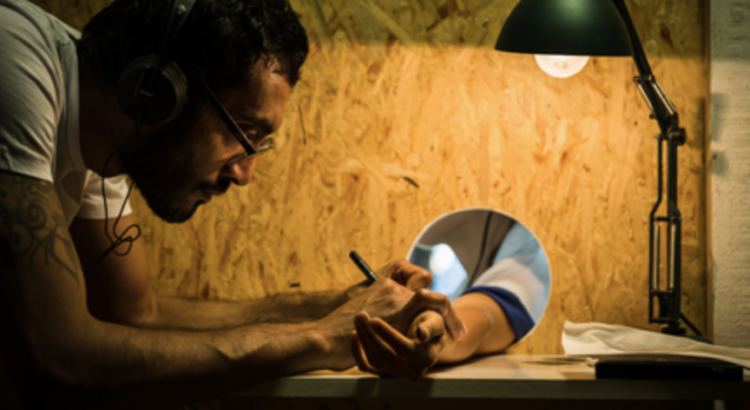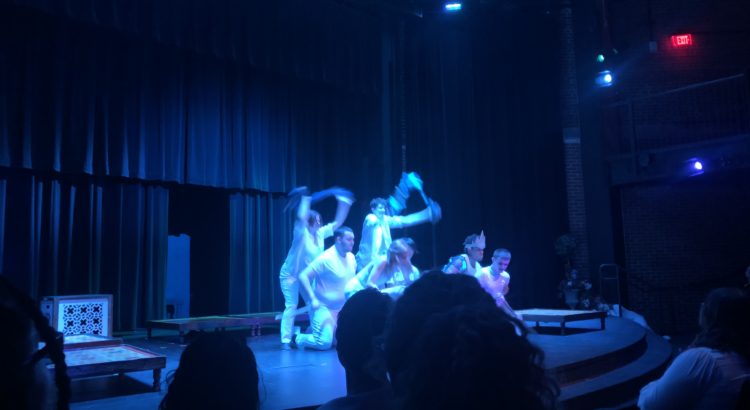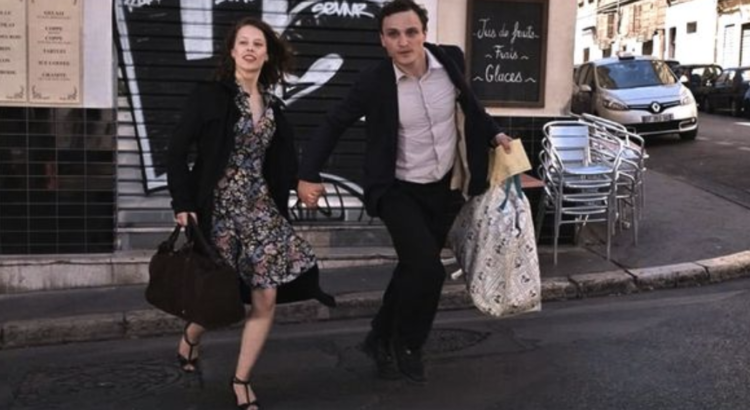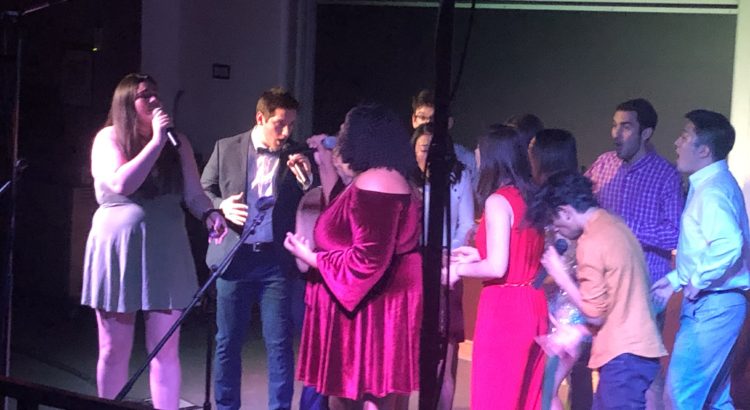You put on the headphones, and they themselves seem significant: the wires connect but they constrict, you have to rely on the tinny sound for information but it blocks out your surroundings. The whole experience was full of these contradictions, to the point that I had to consciously stop myself from thinking through them in order to pay attention. There’s the white wall to my side, and though I can see the borders of it from where I sit I can’t see the other side, so it’s as good as infinite. A little light is coming from where I’ve offered up my arm to the artist, Basel Zaraa, and I’m tempted to look down and through to meet his eyes but I know that something will be broken if I do.
The felt-tip marker is brushing over the flesh on the inside of my forearm and my palm, and I hate how gently he’s holding my fingers down because already I’ve associated him with a Dublin Regulation fingerprint database employee. When I realize I’ve put myself in a position I am privileged to never experience, it’s jarring and it’s a feeling that’s creeping like sweat along my forehead.
I don’t feel any one thing completely after, except for quiet. Not quieted, not disquieted, not just not speaking and not just alone. Quiet is the only adjective I can give myself. I’m sad for what I don’t know and especially for why I don’t, the stupid luck that let me be born into stability and the politics that let others live out of backpacks. Travel is so often romanticized, but there is a difference between travel by choice and by circumstance (further reading: https://doi.org/10.1002/9780470670590.wbeog940).
So in about 15 minutes I’m in and out of another world, halfway a vagabond myself. I’m back and walking home and I feel homesick but mostly physically so, my eyes kind of glassy. It’s a little disappointing that I wasn’t physically transported, though of course that would be impossible. I’m still in Ann Arbor, Michigan walking down the street, and I have no reason to fear that I won’t be here tomorrow. There is a constant stream going through my head berating me for how little I know about the world, and it feels like an abuse to wear this tattoo on my arm like a costume.
But I can use that guilt he’s given me, to take learning into my own hands and to get politically involved. Where the law does not protect the safety of people worried for their lives, there is a problem, a violation of human rights. As election season is upon us, it is a perfect time to get involved and get the right people elected. With primaries right around the corner, the time for active research is now.
You can find out more about Tania El Khoury’s work on her website: https://taniaelkhoury.com/















